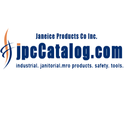-
About
- About Listly
- Community & Support
- Howto
- Chrome Extension
- Bookmarklet
- WordPress Plugin
- Listly Premium
- Privacy
- Terms
- DMCA Copyright
- © 2010-2025 Boomy Labs

 Willie Kelly
Willie Kelly
Listly by Willie Kelly
Abrasives are used to smoothen a machine or materials through rubbing. These abrasives are used in the metalworking industries to produce precision components, and ultra-smooth surfaces, which are a major requirement in the manufacturing of automobiles, airplanes vehicles, and mechanical appliances. Hence, selecting the right abrasive becomes a major requirement in these industries. This post discusses a few prominent varieties of abrasives that are used in the metalworking industries.

Bonded abrasives are a mixture of different materials like aluminum oxide, silicon carbide, boron nitride, and zirconia alumina, which are bonded in a solid form. They are typically shaped into wheels or sticks or blocks. The aforementioned materials are bonded using a resin, a rubber, or a glass. Mostly, these abrasives are used to smoothen the machine through extensive rubbing. There are certain technical aspects to consider when buying bonded abrasives online for your application needs that include:
Type of Abrasive Grains: Aluminum oxide is the most commonly used industrial mineral for bonded abrasive. It is used either individually or along with other materials to create abrasive ceramic grains. It can also be combined with crocus and emery to produce abrasive materials for finishing processes. Other types of abrasive grains used in bonded abrasives include
Garnet
Silicon carbide
Tungsten carbine
Alumina-zirconia
Grade of Bonded Abrasive: Grade is the strength of the bond between the abrasive grain and the grinding wheel.
Wheel Structures: The structures of grinding wheel ranges from open to dense. The choice of wheel structure varies depending on the grinding operation. The wheel structure also depends upon:
The area of contact
Type of material being ground
Finish required
The rate of stock removal
Bonding Material: Bonding materials are used to hold abrasive grain particles together. Following types of bonding materials are used in bonded abrasives.
Electroplated or brazed metal bond materials are used between the abrasive grains and the grains of a metal substrate.
Low-strength bonding materials such as silicate are used in bonded abrasives for reducing heat generation. However, they lack the durability of resinoids.
Reinforced bonds like fiberglass mesh help improve the structural integrity of abrasive grain particles and bonded abrasives.
Some bonded abrasives also use a resin, shellac, glass, or rubber bond system between the abrasive grains.

These abrasives are widely used in various industries for operations such as grinding, dimensioning, stock removal, and so on. Coated Abrasives are made by depositing abrasive grains over a backing material including cloth, fiber, and paper. These backing materials vary as per the industry and application where these abrasives are used. In this type, the material is usually bonded using glues, resins or combinations of the two.Janeice Products Co. Inc. (JPC) offers the widest range of coated disc abrasives online at the most competitive prices. Our selection of coated disc abrasives includes:
Ply Discs
Flap Discs
Fiber Discs
Ceramic Discs
Abrasive Belts
Flaps and Mops
Abrasive Sheets
Abrasive Cloth Rolls

These abrasives are used in various industries for applications such as cleaning, edge blending, rust-removing, metal surface finishing, deburring and so on. Wire Brush abrasives are made up of abrasive grit encapsulated in a nylon filament. This construction offers flexibility and conformability of brush used to control various metal finishing tasks.aneice Products Co. Inc. has an extensive range of wire brush abrasives online to cover your metal finishing needs. You can buy from a wide selection of products, including:
End Brushes
Disc Brushes
Strip Brushes
Tube Brushes
Hand Brushes
Wheel Brushes
Cylinder Brushes
Knotted Wire Cup Brushes
Crimped Wire Cup Brushes
Crimped Wire Wheel Brushes
Abrasive wire brushes are available at JPC in wide face cylinder or power brush format. They impart the benefits of an abrasive while offering the flexibility and conformability of a brush. We offer a selection of different grit sizes to control finish and functionality for various metal finishing tasks.
The filaments of these brush abrasives are made of heat stabilized abrasive grains that are coextruded into these brushes. This configuration provides flexible and homogeneous wire brush abrasives, with approximately 30% abrasive loading effect depending on its weight.
Factors to Consider Before Buying the Perfect Wire Brush Abrasives
There are certain factors to consider for buying ideal wire brush abrasive for your applications. These include:
Grain sizes
Grain types
Loading type
Diameter of the filament
Safe free speed recommended by manufacturer

These abrasives consists of a non-woven web of nylon fibers soaked in grains of abrasive. These three-dimensional non-woven abrasives are versatile, durable and flexible. They can be used in various applications, and are usually available in the form of wheels, pads, brushes. Non-woven abrasives are offered with a reinforced backing which delivers good flexibility.Industrial non woven abrasive products have an open mesh construction, and are pre-formed to conform to unique-shaped work pieces. The non-aggressive nature of nylon and grit in these products makes them ideal as a finishing tool. The following characteristics make them useful for numerous finishing tasks in various industries:
Washable
Resilient
Non-rusting
Non-loading
Non-metallic
Conformable
Non-conductive
